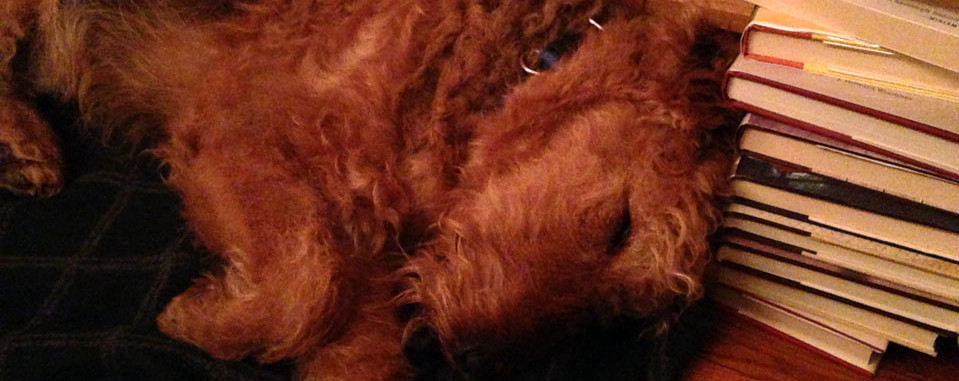
Even a brief summing up of the story of Annabel is by no means simple. A child is born in a remote Labrador village in the late 1960s. The child is born a hermaphrodite, bearing both male and female reproductive organs. Three people know how the child came into the world: the child’s parents and a woman who is a trusted family friend who attended at the birth. The three people have different perspectives then and throughout the child’s life as to how the child should be raised. However, a decision is taken early in the child’s life to raise him (well, that gives it away, doesn’t it?) one way, and to keep the other part of his identity a secret, even from him.
Not unexpectedly, the decision has repercussions: some immediate, some longer term, some clearly and directly affecting and making an impression on the child Wayne, and some having more effect or creating more strains or complications for the people around him/her. In many ways, Wayne’s childhood is one of growing and thriving in a curious, unique but generally emotionally and physically secure fashion, with the firm but divergent nurturing of the three loving people who know his complete story. He also flourishes with the friendship and affection of a singular female friend. That friend’s name is Wally, short for Wallis, which echoes a famous Wallis who, ironically, was also rumoured to be intersex … which, of course, only added to her mystique. Author Kathleen Winter populates Wayne’s world with images and influences that fill out the fraught, magical world of his/her existence like so many swirling snowflakes, but also testify symbolically to the very particular beauty of his not fully realized duality. Stars and constellations, statistics and synchronized swimming are all literal interests of Waynes, but also manifestations of and analogies for the symmetries and mysteries of which he/she is comprised. They also hint at how those symmetries are not fully realized and balanced.“You can’t be synchronized if you’re by yourself. Imagine synchronizing your watch to the right time if it is the only watch in the world.”
Wayne’s fascination with the idea of living on (rather than crossing) a bridge, and Wayne and Wally’s fanciful, fragile and temporary refuge, a fort built and poised delicately over a creek … Annabel brims with vivid images that capture memorably Wayne’s unwitting suspension between worlds, genders and selves.
Perhaps most potent of all the elements in Annabel are those of voices literally and figuratively suppressed and lost, then regained and found. Wayne/Annabel learns in very dramatic and specific fashion what he/she is comprised of, and then is tested most cruelly only as he/she is gaining a true sense of self and voice. Similarly, long lost and then found friend Wally fights to regain her voice in a long fought battle of a different kind. For both, their new voices …“… came from a different person, a person who had learned how to build a voice from the ruins up, a person who had lost everything and had begun from having worse than nothing.”
The weekend I devoured Annabel, I was also reading an absorbing essay by the award-winning Canadian poet A.F. Moritz, entitled “What Man Has Made of Man / Can poetry reconnect the individual and society?” In many respects, Moritz’s essay is a reflection on the differences between solitude (a good and contemplative state), communion/community and isolation.
“The formative struggle of the modern individual’s life is to find a place in society …There’s no such division as the one usually made, between inward and private life on the one hand, political and economic life on the other. It’s a matter of life and death. Isolation is death. A society that isolates its individual members from itself, placing them in enforced solitude, or that gives them only a simulacrum of communion, is deathly, and it is deathly because what it believes in is death. Communion on the other hand is life and comes out of belief in life.”
While Wayne/Annabel’s future is not defined in the end, that future’s prospects are presented with hope nonetheless. Wayne/Annabel is moving steadily from isolation to communion and to a comfortable and rightful place in a world of his/her choosing.
Kathleen Winter has seamlessly woven compelling and organic layers of themes and symbols with, at its foundation, a heartfelt story of loving steadfastly and unconditionally, and striving to find one’s place and identity while retaining respect for others.

Pingback: Canada Reads 2014 – refreshed, inspired, re-energized | bookgaga
Pingback: Canada Reads – how I’m approaching it in 2014 | bookgaga
What was the deal with Treadway and the orange?
I think the orange was Treadway’s version of a coin toss. You may recall he was struggling with whether or not he should pursue Derek Warford. Treadway placed an orange on Signal Hill and waited for the hawk to either pick it up … or not. And … “The hawk used the argument of one lone proclamation followed by silence, and in that silence, Treadway knew, he could protest all he liked, but he would not win the argument.”
Pingback: Canada Reads 2014 virtual book club | bookgaga
Pingback: The Ghost Brush, by Katherine Govier | bookgaga
Excellent review! Very insightful, and well written.